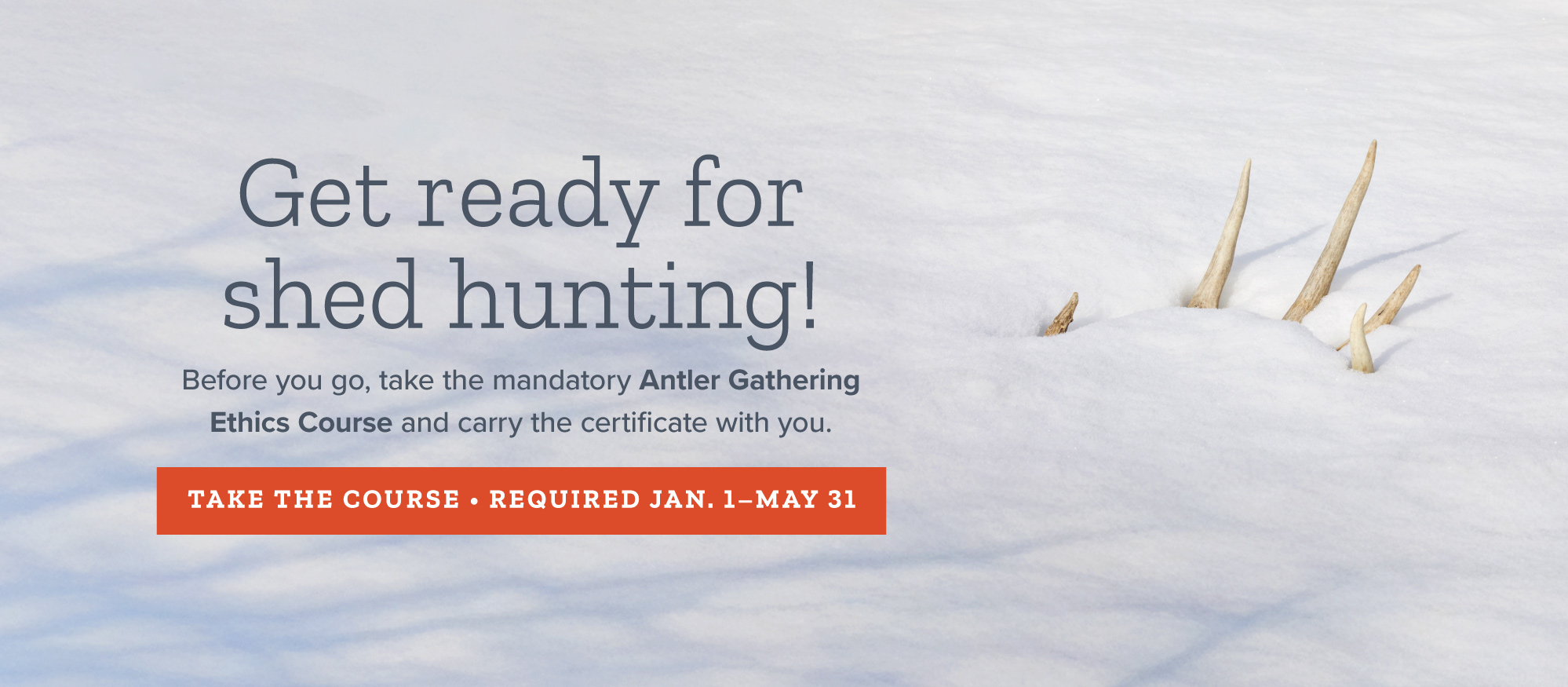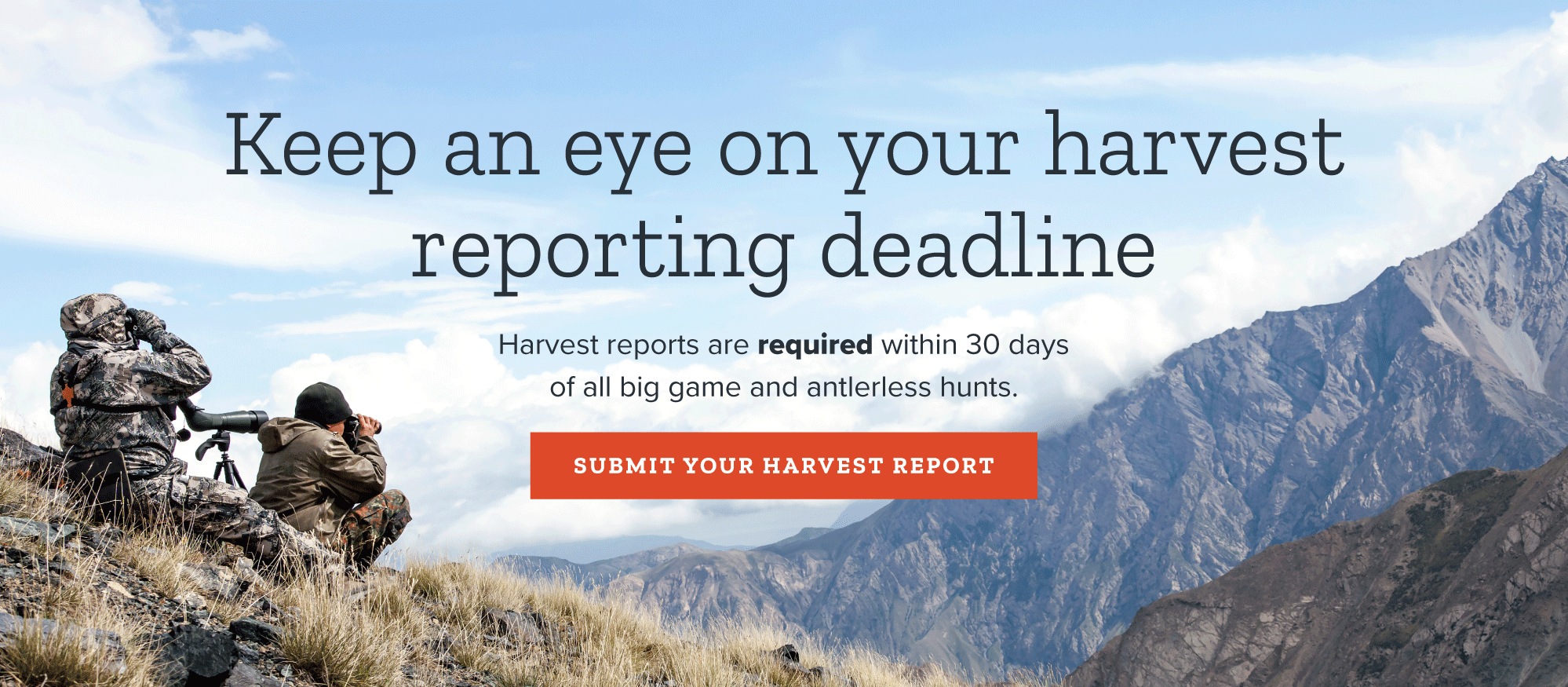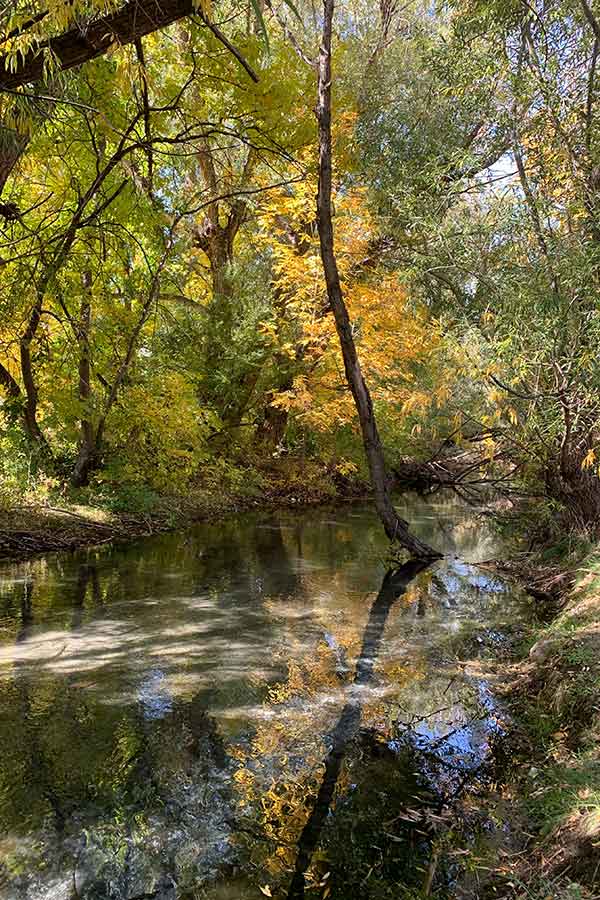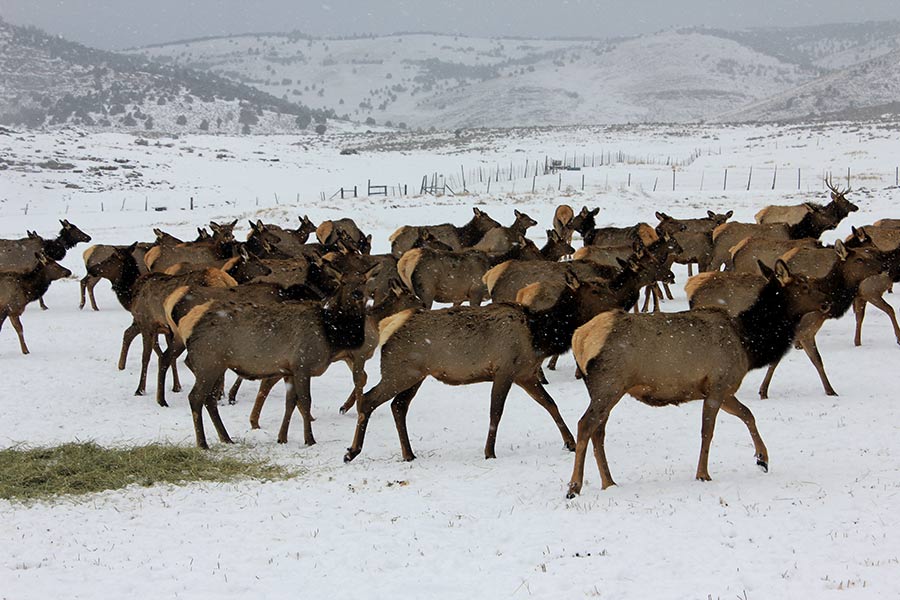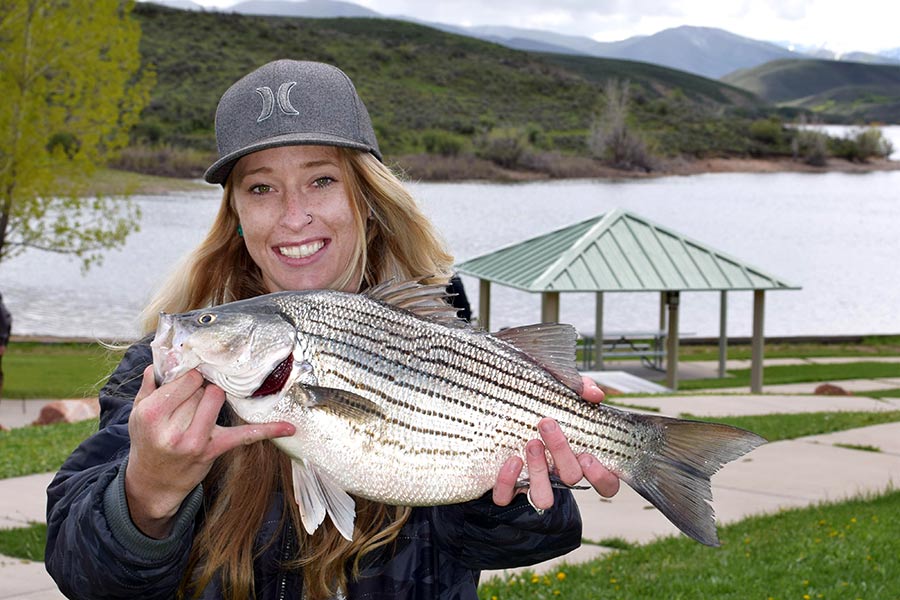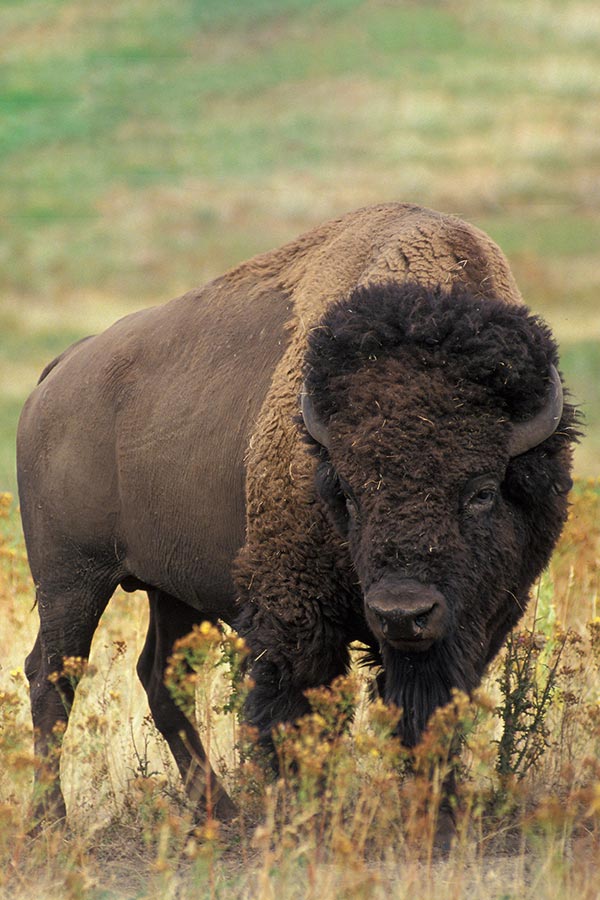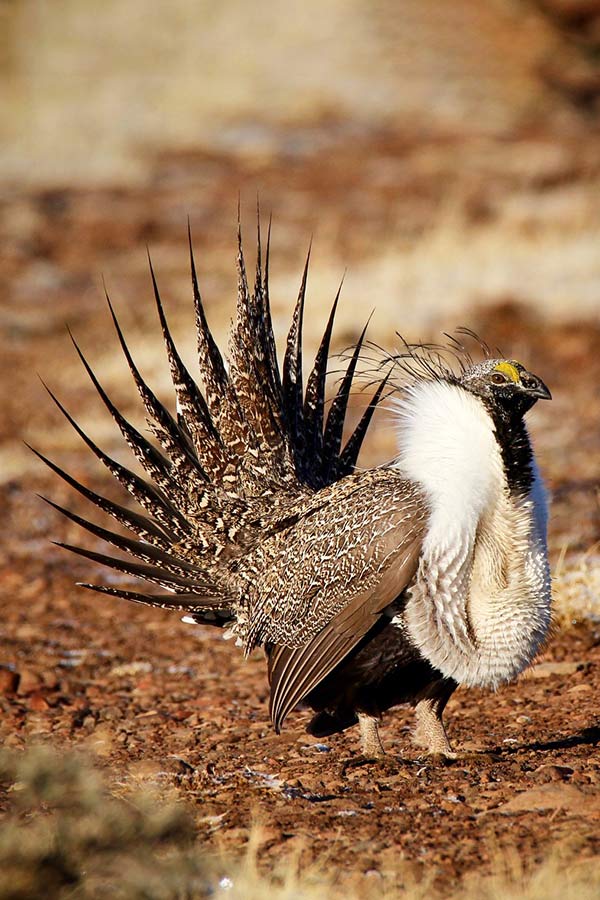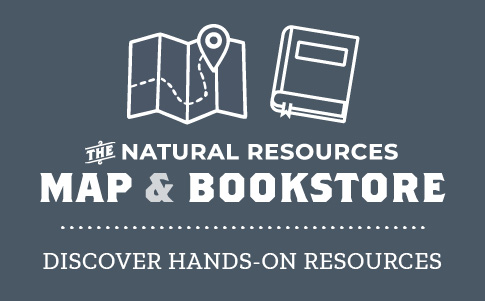- Where to see America's national bird in Utah during winter migrations
- Want to gather shed antlers from Jan. 1 through May 31? Take the free, mandatory 2026 ethics course
- Planning to go ice fishing this winter? What anglers should know
- DWR stocks more than 11.6 million fish throughout Utah in 2025
- Utah Wildlife Board approves updates for bison hunting, other changes
- Enjoy bird-watching? Help biologists gather information during 126th Christmas Bird Count
- Need a gift idea for the outdoorsy person in your life? Buy a hunting/fishing license or slam registration
- Apply for Utah’s 2026 spring limited-entry turkey hunting permits, starting Dec. 16
DWR regions
The Division of Wildlife Resources consists of an administrative office in Salt Lake City, and various offices and facilities in Utah's five management regions. The five DWR regions and the locations of their regional offices are:
- Central: Springville
- Northern: Ogden
- Southern: Cedar City
- Southeastern: Price
- Northeastern: Vernal
Each region is administered by a regional supervisor who — among other duties — serves as the Regional Advisory Council liaison.
Central Region
The Central Region is the most heavily populated region in the state, and includes Salt Lake, Utah, Juab, Sanpete, Wasatch and Tooele counties, as well as a portion of Summit County. Some of North America's most popular recreation areas are found within the region, including the many ski resorts of the Park City and Cottonwood Canyon areas, hiking and biking trails along the Wasatch Front and nationally known Blue Ribbon fisheries such as Strawberry Reservoir and the Provo River.
The region has a dramatic diversity of wildlife habitats, ranging from desert to alpine, with elevations that vary from approximately 4,000 feet to 12,000 feet above sea level. These differing habitats support diverse wildlife species and extensive wildlife-watching opportunities. Wetland habitat areas within the region are a big attraction for wildlife. The Utah Lake wetlands alone provide essential habitat for more than 200 bird species, 49 mammal species, 16 reptile and amphibian species and 18 fish species.
The DWR owns and administers a large number of wildlife management areas in the Central Region — such as the Starvation, Loafer Mountain, Spencer Fork, Twelve Mile and Wallsburg wildlife management areas — to provide crucial summer and winter range for big game animals and upland game. In addition to being a large contiguous parcel of waterfowl habitat, the Lee Kay conservation area (northwest of the Lee Kay Public Shooting Range) contains approximately 934 acres for public use, including dog training, exercise and bird-watching. It is, in fact, the largest publicly-accessible area for dog training in Utah. The region's WMA holdings also allow premier angler access, which aids entry to Blue Ribbon fisheries like the Provo River.
Many of the largest lakes and reservoirs in Utah are located within the Central Region, including Strawberry Reservoir, Utah Lake, Jordanelle Reservoir, Deer Creek Reservoir and Yuba Reservoir. Other popular mountain lakes and streams also provide countless opportunities for recreation.
The Central Region Office is located in Springville.
Northern Region
The Northern Region includes Box Elder, Cache, Davis, Morgan, Rich, Summit and Weber counties, along with limited portions of Salt Lake, Tooele and Wasatch counties. The main office is in Ogden.
The Northern Region has a wide diversity of wildlife habitats and species. It offers spectacular birding and hunting around the Great Salt Lake, including tens of thousands of acres dedicated to waterfowl habitat and public access for hunting at the Farmington Bay, Harold Crane, Locomotive Springs, Ogden Bay, Bear River Bottoms and Willard Spur waterfowl management areas. There's easy access for hunters with disabilities to waterfowl hunting from state-operated blinds at the Public Shooting Grounds Waterfowl Management Area. The area also offers unique opportunities for swan and sandhill crane viewing and hunting, and forest grouse hunting.
Crucial big game winter and summer range habitats in the region can be found at many DWR-owned areas, including the Henefer-Echo, Gordon Creek, and Cinnamon Creek wildlife management areas. The Hardware Wildlife Management Area is also in the Northern Region. It is a working ranch that enhances big game winter range and other critical habitats, thereby maintaining healthy rangelands for all wildlife. Hardware WMA also provides facilities and support for long-term wildlife and habitat research, and offers a variety of community outreach and education programs. The WMA promotes year-round public access for watchable wildlife, hunting, fishing and other outdoor recreation.
Angler access in the Northern Region can't be beat. Straddling the Utah/Idaho border, Bear Lake is Utah's second largest natural freshwater lake and is a renowned tourism destination. The Northern Region is also home to Pineview, Rockport, Echo and Lost Creek reservoirs, the sparkling lakes of the Uintas, the Weber River, Logan River and many community ponds.
Northeastern Region
The Northeastern Region office is located in Vernal, and the region includes Daggett, Duchesne and Uintah counties as well as portions of Wasatch, Grand and Summit counties. This area is commonly called the Uintah Basin. It encompasses the south slope of the Uinta Mountains, Flaming Gorge Reservoir, the Green River, the eastern Wasatch Mountains and the northern Book Cliffs — it is one of the most wildlife-rich areas in the state and nation. It includes many high-quality wildlife and fisheries resources, making it a great place for all kinds of wildlife-related recreation.
The Uinta Mountains are home to elk, mule deer, moose, Rocky Mountain bighorn sheep, mountain goats, black bears, osprey, golden eagles, red-tailed hawks and roughly 350 other vertebrate species. In these mountains, the DWR manages more than 400 waters for quality trout fishing, and most provide remote, wilderness-type opportunities. These mountain lakes and streams are home to the native Colorado River cutthroat trout and mountain whitefish. Anglers can also find brook trout, splake, golden trout, brown trout, tiger trout and Arctic grayling.
The Book Cliffs are home to one of Utah's two free-ranging bison herds. Bison were successfully reintroduced after decades of preparation, including the implementation of the Book Cliffs initiative. The Book Cliffs are also known for their popular mule deer and elk hunting opportunities. The Book Cliffs Roadless Area is a large expanse of canyons and ridge tops in the upper Willow Creek drainage that offers a unique backcountry experience.
The DWR owns several large wildlife management areas in western Duchesne County, including Tabby Mountain WMA, the largest WMA in the state. There are many other large WMA parcels, including the Currant Creek, Wildcat, Strawberry River and Rabbit Gulch WMAs. They provide habitat for a number of wildlife species but are especially crucial for big game animals. These parcels were either acquired as mitigation for the Central Utah Project or were purchased with federal aid funds for the protection of big game winter ranges.
A small colony of black-footed ferrets is doing well in the Coyote Basin area of the region, thanks to recovery efforts. Recovery efforts also look promising for four threatened and endangered fish species (humpback chub, bonytail, Colorado pikeminnow and razorback suckers) that are native to the Green River. Colorado River cutthroat trout are making a respectable comeback, too. And from statewide extinction to promising herds, the Rocky Mountain bighorn sheep recovery program has made exciting progress.
While the Northeastern Region is the smallest of the regions geographically, it is a giant in terms of quality wildlife habitat and high densities of wildlife species.
Southeastern Region
The Southeastern Region office is located in Price. Geographically, the region covers about one-fifth of the state and includes all of Carbon, Emery, Grand and San Juan counties. Portions of Utah, Duchesne, Sevier, Wayne, Garfield and Kane counties make up the remainder of the region.
The interior of the region is dotted with geographic jewels including the San Rafael Swell and Reef, Desolation Canyon, Labyrinth Canyon, Cataract Canyon, San Juan River, the La Sal Mountains (second-highest peak in Utah), the Abajo Mountains, Elk Ridge, the Henry Mountains, Lake Powell and Range Creek.
The region manages several wildlife management areas. These include Gordon Creek, Cold Spring, Lower Fish Creek, the Upper and Lower San Rafael properties, the Huntington Game Farm, Nash Wash and the Scott and Normal Matheson Wetlands Preserve.
The Henry Mountains are home to one of Utah's two free-ranging bison herds. The Green, Colorado and San Juan rivers are critical habitat for a variety of endemic native fish species. These threatened and endangered fish include the Colorado pikeminnow, humpback chub, razorback sucker and bonytail. Pure-strain Colorado River cutthroat trout have recently been verified in the Price and San Rafael river drainages. The region has every big game species in Utah, including mule deer, pronghorn, desert bighorn sheep, Rocky Mountain bighorn sheep, mountain goats, elk, moose and bison. The La Sal Mountains, Abajo Mountains and Elk Ridge are the only places in Utah where the Abert’s squirrel is found. This same area is also home to the Gunnison sage grouse.
Many quality fishing opportunities exist in the region. Scofield Reservoir, Joes Valley Reservoir, Electric Lake and other bodies of water provide excellent year-round trout fishing. The region has a diverse array of angling opportunities. Numerous high-mountain lakes and streams provide excellent fishing for brown trout, Colorado River cutthroat trout, rainbow trout, tiger trout, lake trout, brook trout and Arctic grayling. Tiger muskellunge, striped-bass hybrids, largemouth bass, channel catfish, northern pike and black crappie are managed in mid to low-elevation reservoirs. In addition to the management of sportfish and native species, the region also works on numerous habitat improvement and angler-access projects.
Southern Region
Located in Cedar City, the Southern Region office oversees the largest of Utah's five regions, which encompasses the southwestern third of the state. The region includes Washington, Iron, Beaver, Millard, Kane, Garfield, Piute and Sevier counties, along with half of Wayne County.
The region contains the highest degree of habitat diversity in Utah. Elevation ranges from the Mojave Desert at 2,000 feet (in the St. George area) to the top of the Tushar Mountains at 12,000 feet, near the city of Beaver. Southwestern Utah offers wildlife experiences unsurpassed in any other part of the West. You can stroll the red sand of the desert in the morning — observing desert tortoises, sidewinders and Gila monsters — and then climb to the top of Mount Belknap to watch mountain goats in the afternoon.
Anglers can explore endless possibilities for warmwater fishing at Lake Powell or try their luck at any number of trout fisheries, including Panguitch Lake, Kolob Reservoir and Minersville Reservoir. If it's backpack fishing and high-mountain streams that interest you, the pristine solitude of Boulder Mountain is where you can fish for months and never cross the same path twice.
Hunters in the Southern Region enjoy what is arguably some of the finest big game hunting in the West. The Paunsaugunt unit is located in Kane County and offers what may be one of the world's premier, limited-entry mule deer hunts. There are also several elk units managed for large bulls, such as the Beaver, Boulder and Pahvant. Small game opportunities also abound, with healthy populations of Gambel's quail, mourning doves, cottontail rabbits, chukar partridge, dusky grouse, sage-grouse and turkey.
Because of the uniqueness of habitats found in the Southern Region, several threatened or endangered species are also found there. The desert tortoise, woundfin minnow and the Virgin River spinedace are all found in the Virgin River drainage. The Utah prairie dog is only found in the high-desert area of the Southern Region. The presence of these species makes wildlife management a challenge in the path of a growing human population.
